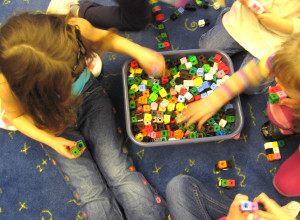Teaching with math manipulatives helps children understand math concepts. Hands on learning, or learning by doing, keeps your students’ attention as they naturally want to play with and explore objects.
When children can touch and move manipulatives or real things when learning new skills, their senses are involved in the learning experience.
They notice, experiment, question, and connect ideas. Children benefit when they are able to fully understand new concepts with concrete materials before they are expected to understand the same ideas with symbols.
Hands on Math 1, 2, 3s
Stages of hands-on learning in math are often called:
- concrete
- representational or connecting
- abstract
The terms “concrete materials” and “manipulatives” are most often used to describe educational learning materials that are real or physical and tangible, for example, blocks, counters, popsicle sticks, pattern blocks, and base ten blocks.
- The “concrete stage” occurs when children use only real objects to demonstrate an idea.
- The “representational, connecting or pictorial stage” happens when children work with concrete objects as well as drawing pictures or diagrams to record their learning.
- The “abstract” stage occurs when children use only symbols – numbers, words, pictures, or diagrams to represent their thinking.
Manipulatives are crucial to the early development of mathematical ideas for young children. It may take a bit of practice to learn how to teach with them, especially if you are used to using worksheets. Create a fun and educational math learning center, where children are free to explore the manipulatives first.
More info…
10 Terrific math manipulatives – The following 10 math manipulatives are not only great for teaching math concepts and vocabulary, they also encourage imaginative play and exploration.
10 Practical steps to teaching with math manipulatives – The Basics! Although it is tempting to have all your math manipulatives set up and ready to go in September, it’s easier to train your students to clean up and learn routines when you put out a few tubs at a time.